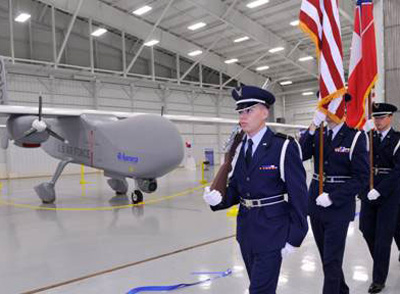Aurora Flight Sciences unveiled its Orion unmanned air system, a demonstrator that will stay aloft for up to five days, on 22 November in Mississippi.
Orion was selected by the US Air Force Research Laboratory (AFRL) in late August to meet the objectives of the Medium Altitude Global ISR and Communications (Magic) Joint Capability Technology Demonstration (JCTD). The programme's goal is to demonstrate a five-day flight of the Orion at 20,000ft (6,100m) with a 453kg (1,000lb) intelligence, surveillance and reconnaissance payload.
First flight is expected in mid-2011, the company says. Orion was developed under the sponsorship of both the AFRL and the US Army Space and Missile Defense Command and with Aurora private funding.
|
|
|---|
© Aurora Flight Sciences |
Aurora claimed victory over Lockheed Martin on Magic with Orion in September. The Virginia-based company is doing most of the work on the project from its Columbus, Mississippi, facility under the $4.7 million contract win.
Before the contract announcement, the company had hoped to make a first flight with the UAV in late October 2010. However, the schedule was slowed to enable the parties to evaluate payload options, concepts of operations and then grow and refine the requirements, Aurora says.
The AFRL's requirements for Magic's medium-altitude, extreme persistence aircraft are for it to remain airborne for up to 155h while carrying a 226kg payload at 15,000ft. The same aircraft also would be expected to carry a 1,130kg payload for up to 80h at the same altitude, it says.
Aurora says Orion is relatively low-risk for a demonstration project. Rather than the liquid hydrogen fuel route other experimental high-altitude, ultra-long endurance aircraft are following, its design is powered by the same Austro diesel engines used on Aurora's Centaur optionally piloted vehicle, based on the Diamond DA42.
Source: Flight International

















